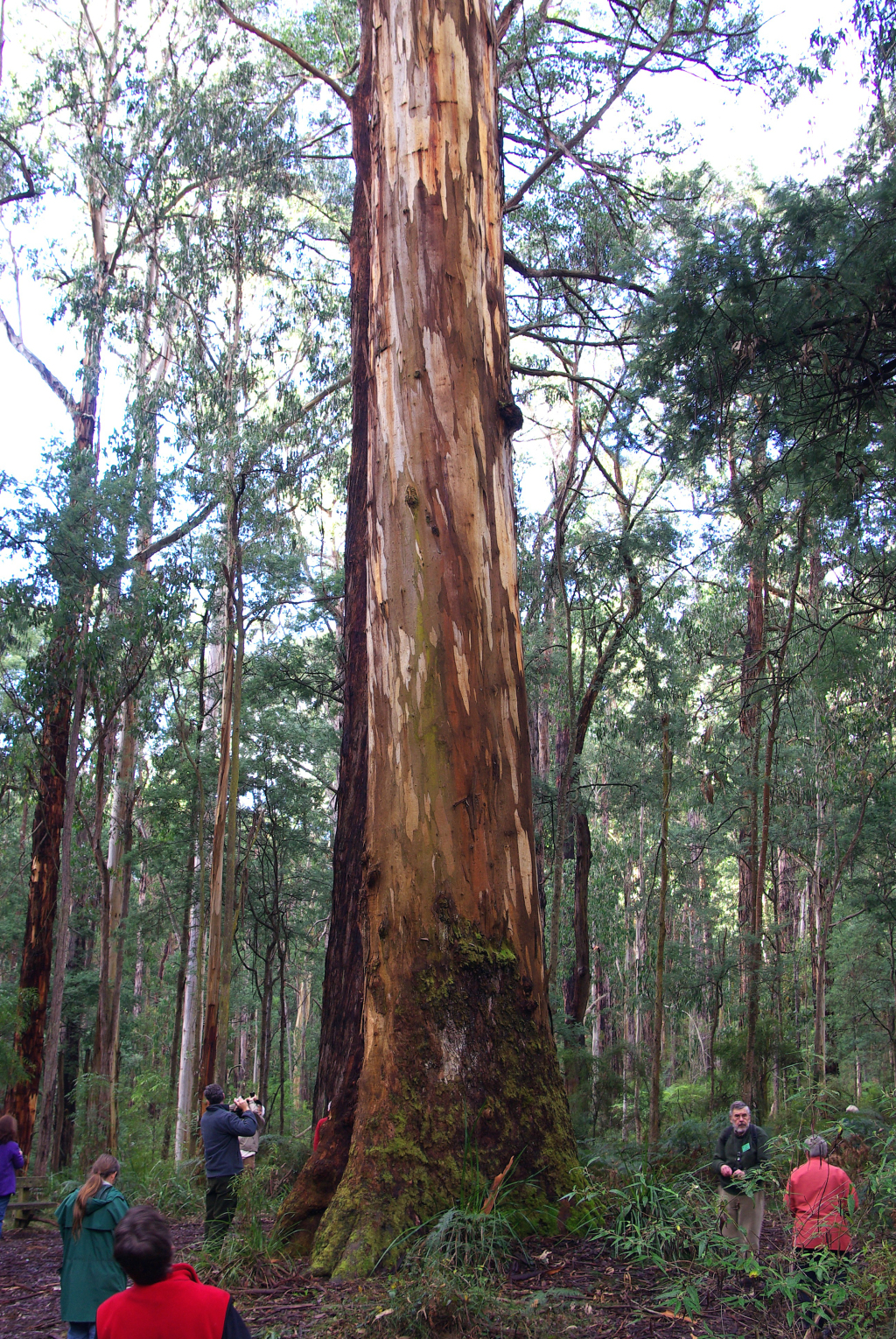Eucalyptus cypellocarpa
L.A.S.Johnson Mountain Grey-gumTree to 65 m tall; bark smooth, yellowish, grey or white throughout, or with some thin, rough bark on part of trunk. Juvenile leaves sessile, opposite for many pairs, ovate to broadly lanceolate, to 17.5 cm long, 7.5 cm wide, discolorous, glossy, green above, rarely slightly glaucous; adult leaves petiolate, alternate, lanceolate to narrowly lanceolate, 11–30 cm long, 1–4 cm wide, concolorous, glossy, green, reticulation dense, with numerous island and intersectional oil glands. Inflorescences axillary, unbranched; peduncles flattened, to 2.5 cm long, 7-flowered; buds sessile or shortly pedicellate, cylindric with conical or beaked operculum, angle often continuing from pedicel along hypanthium, to 1.2 cm long, 0.5 cm diam., scar present; stamens irregularly flexed; anthers dorsifixed, cuneate; ovules in 4 vertical rows; flowers white. Fruit sessile or pedicellate, cylindric to truncate-ovoid, to 1 cm long, 0.9 cm diam.; disc descending; valves 3, rim level or below; seed dark brownish-black, flattened-ellipsoid, shallowly reticulate, hilum ventral. Flowers Feb.–Jul.
Wim, VVP, GipP, OtP, Gold, CVU, GGr, DunT, EGL, EGU, WPro, HSF, HNF, OtR, Strz, MonT, HFE, VAlp. Also NSW, ACT. A widespread species in Victoria, in the Black Range, Grampians, Pyrenees and south of the divide from the Otway Range to the Howe Range, usually in gullies or moist mid-altitude slopes, but also on poor, dry, rocky country.
A glaucous form requiring further study occurs at Valencia Creek in Central Gippsland.
Eucalyptus alaticaulis, E. litoralis, E. pyrenea have recently been segregated from this species. These tend to be smaller, often multi-stemmed trees or mallees with somewhat persistent bark. See notes under those species.
Brooker, M.I.H.; Slee, A.V. (1996). Eucalyptus. In: Walsh, N.G.; Entwisle, T.J., Flora of Victoria Vol. 3, Dicotyledons Winteraceae to Myrtaceae, pp. 946–1009. Inkata Press, Melbourne.
 Spinning
Spinning


